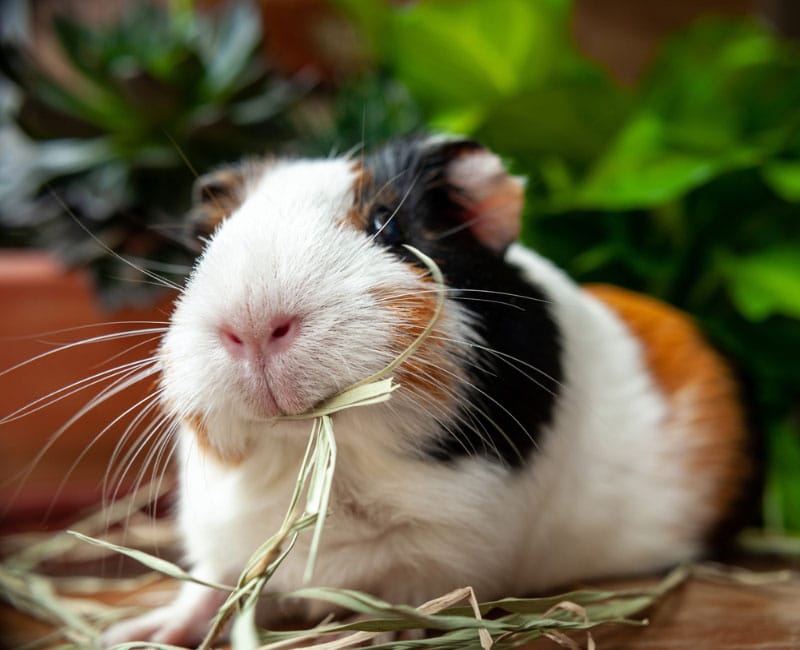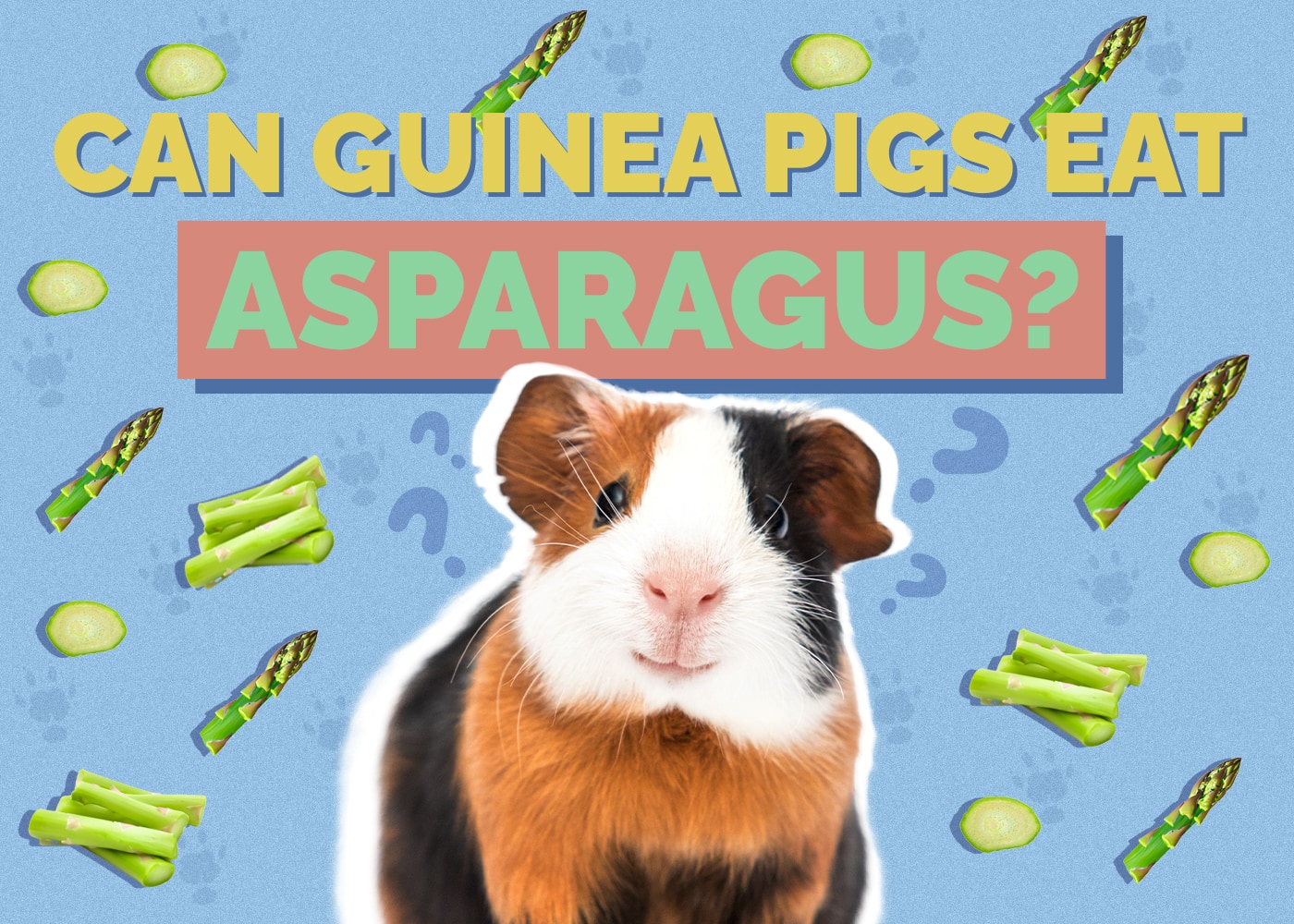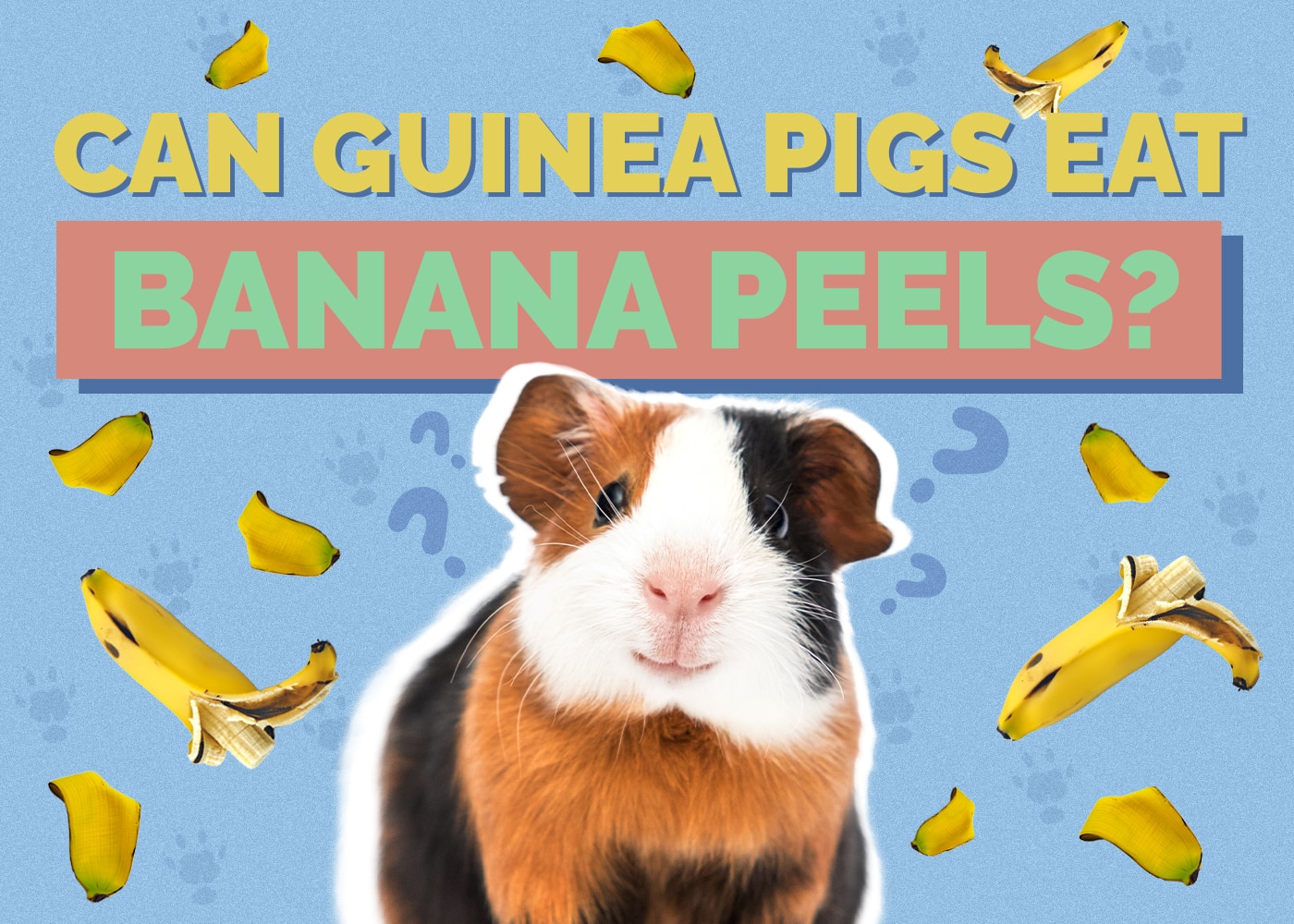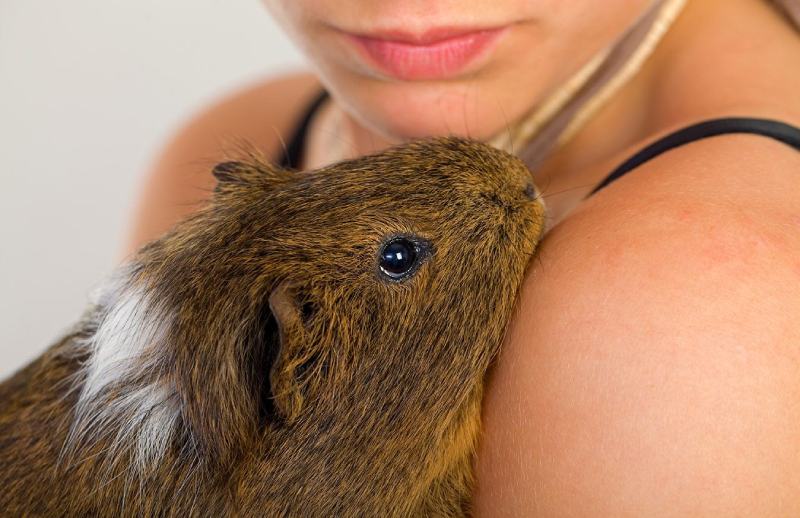Can Guinea Pigs Eat Plum? Vet Approved Risks & Benefits

Updated on

Click to Skip Ahead
The thought of a soft, plump, juicy plum is enough to get a lot of people salivating. Plums are low in fat, low in calories, and high in fiber. They also contain antioxidants as well as a good variety of vitamins and minerals. They are considered a healthy snack for humans, but does that mean we can feed them to Guinea Pigs?
Plums are considered safe for Guinea Pigs to eat, but only in moderation, and you should never feed the pit or stone of the fruit to your Cavie. Like the pits of a lot of fruits, plum pits contain small amounts of cyanide, and they can also pose a choking hazard. Feed about an eighth of a plum and leave the skin on; this has a high concentration of antioxidants. Only feed fruit of any kind once or twice a week as a tasty treat.
Read on for more information on the benefits, potential pitfalls, and serving suggestions when giving plums to your Guinea Pigs.
Guinea Pig Diet
Guinea Pigs are herbivores. They only eat plant matter. In fact, in the wild, they would almost exclusively survive on a diet consisting of grass, seeds, twigs, and some plants and herbs. They would not naturally eat root vegetables and would not eat fruit.
Pet Guinea Pigs should be given a diet that sticks quite closely to their wild diet. While they wouldn’t eat root vegetables and fruit in the wild, they can be given these as an occasional treat. They shouldn’t form the basis of a Guinea Pig diet, or be fed too often, but fruit and roots may be given once or twice a week. The majority (around 80%) of a Guinea Pig’s diet should consist of grass or hay, like Timothy hay, with the remainder made up of greens and leafy green vegetables. Fruit treats can be fed once or twice a week, and should not make up more than around 5% of your cavie’s diet.

Are Plums Safe for Guinea Pigs?
Plums are not toxic for Guinea Pigs and although they do contain some natural sugar, they are not as high in sugar as a lot of other fruits. The pits or stones, however, are not considered good for Guinea Pigs because they contain amygdalin. Amygdalin turns into cyanide when eaten raw, and this does pose a health concern for Cavies.
The Benefits of Plums for Guinea Pigs
Plums are safe to be fed to Guinea Pigs in moderation and are one of the healthier treats you can give your pet. The potential benefits include:
- Antioxidants – Antioxidants fight free radicals in the body, which can cause damage to cells. The greatest concentration of antioxidants in plums is found in the skin, so it can be a good idea to feed the skin as well as the flesh.
- Vitamin C – Plums contain a variety of vitamins, especially vitamin C. Vitamin C is responsible for supporting the immune system, and reducing the risk of illness. Guinea Pigs cannot synthesize vitamin C in their bodies, which means that this essential vitamin must come from dietary sources.
- Flavonoids – Flavonoids offer similar effects to antioxidants, and they also offer anti-inflammatory, anti-cancer, and anti-viral properties, making them hugely beneficial. They are primarily found in plant matter, so your Guinea Pig should get a decent amount of flavonoids in their diet anyway, but it certainly doesn’t hurt to have more of the protection they offer.
- Potassium – Potassium helps maintain muscle strength and also supports blood pressure levels while protecting the cells in the body. It is an essential mineral for Guinea Pigs.
Potential Risks
Although plums do offer certain health benefits, they also carry some risks. Although these risks can be mitigated through the proper preparation and serving of the fruit, you must know of them.
- Pesticides – Always ensure that the fruit is thoroughly washed before feeding, and ideally choose those that are organically grown to avoid the use of pesticides. The skin is one of the healthiest parts of the fruit for your Guinea Pig, so having to get rid of it because of the worry of pesticides negates a lot of the benefits of feeding this fruit.
- Oxalates – Oxalates are naturally occurring compounds that are found in fruit and v In the case of Guinea Pigs, which are already naturally prone to bladder stones, the oxalates can form crystals in their urine that become stones. You should avoid feeding too much of any food that contains oxalates, although small amounts are generally safe.
- Choking – The stone of the plum is a hazard. Pits pose a choking hazard to any animal that eats them, and while the size of a Guinea Pig means that it will rarely try and swallow something the size of a plum pit whole, it can happen, especially if your Cavie is too busy enjoying the flavor of the juicy fruit. Always ensure you remove the pit before feeding plums.
- Cyanide Toxicity – Choking isn’t the only hazard that the pit poses. The pits contain amygdalin and when eaten, this becomes cyanide. Guinea Pigs are small so it only takes a small amount of cyanide to cause poisoning. The amygdalin is only released if the pit is chewed or otherwise broken open, but this is a very real risk that is easily avoided by simply removing the pit before cutting and feeding.
Preparing Plums
Always ensure that the plum is washed thoroughly to remove any pesticides and other chemicals from the exterior of the plum. Remove the pit, and then chop the fruit into about eight pieces. Give one-eighth of the fruit to your Cavie, in a bowl, and remove any of the fruit that is left after approximately half an hour.

How Often to Feed Plums?
Guinea Pigs rarely, if ever, eat fruit as part of their natural diet, but most of them do enjoy the natural sweetness and the juicy texture of fruits like plums. Fruit should be fed sparingly and occasionally, with a small amount given once or twice a week. It is a good idea to rotate the types of fruit given, so you can feed a small piece of plum once a fortnight or so.
Other Fruits You Can Feed to Guinea Pigs
Fruits are a tasty treat for Guinea Pigs, and plums are just one type of fruit they can enjoy. Apples are a popular choice, but you must remove the pips because they contain amygdalin and are more easily chewed than plum pits. Mango and papaya are other good options, while most berries can be fed as an occasional treat.

What Fruits Should Guinea Pigs Not Eat?
Rhubarb is poisonous to Guinea Pigs, so should be avoided, and you should remove pips from apples and stones from plums and other stone-containing fruits. Also, because they are high in sugar, you should not feed them dried fruit.
Conclusion
Guinea Pigs need a diet that is high in hay or grass. They need a lot of fiber in their diet, and the munching motion of eating grass and hay also helps maintain healthy tooth length. However, as part of a healthy diet, you can feed fruit as a treat once or twice a week.
Plums are a reasonably healthy option as a fruit treat, but you need to thoroughly wash the fruit, remove the pit, and only feed about an eighth of a plum every week or two. Other fruits you can also give include apples and mangoes but avoid giving rhubarb or any dried fruits.
See Also:
- Can Guinea Pigs Eat Orange Peels? Vet-Approved Benefits, Drawbacks, & FAQ
- Can Guinea Pigs Eat Radicchio?
Featured Image Credit: Neven Krcmarek, Shutterstock











